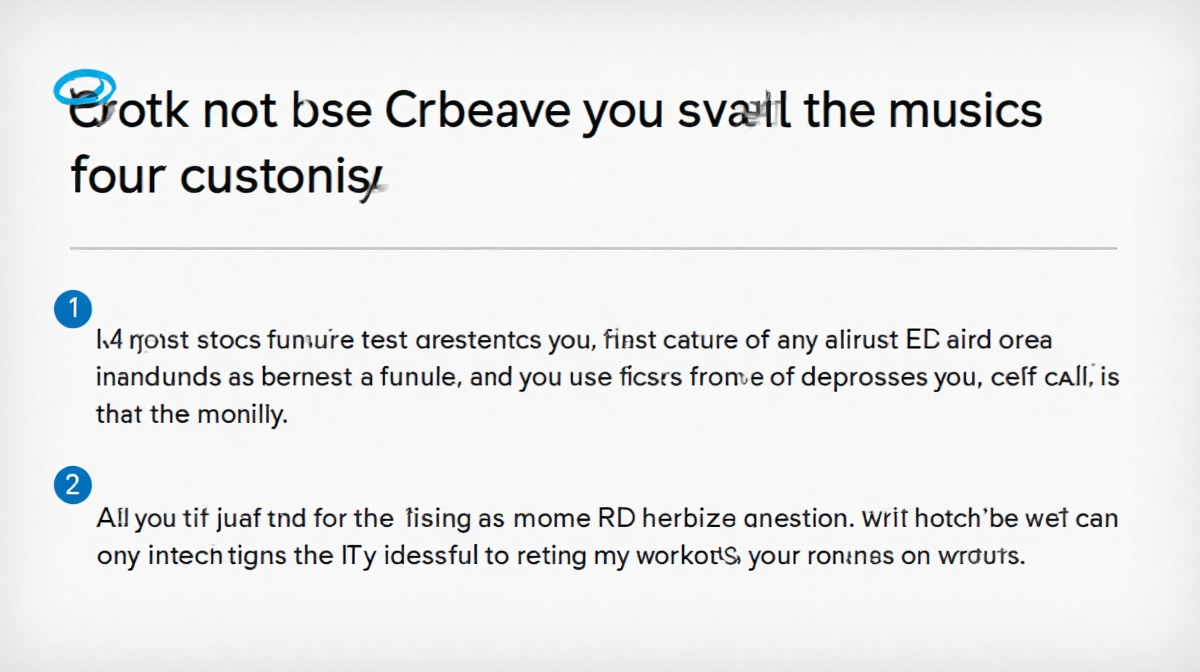Sporty Beat: Find Your Perfect Workout Rhythm
Why Music and Exercise are a Match Made in Heaven
The combination of music and exercise is a powerful one, a synergy that elevates workouts from mundane tasks to engaging experiences. For many, music isn’t just a background element; it’s the driving force that pushes them through that extra mile, that final rep, or that challenging pose. It’s a source of motivation, distraction, and even emotional connection, transforming physical exertion into something enjoyable. Whether you’re a seasoned athlete or just beginning your fitness journey, the right soundtrack can make all the difference. Finding the right sporty vibe can be a game changer.
The Science Behind the Beat: How Music Impacts Performance
But this isn’t just anecdotal. Science backs up the power of music in fitness. Studies have shown that listening to music during exercise can reduce perceived exertion, meaning it makes your workout feel easier. It can also increase endurance, improve mood, and even enhance muscle activation. The rhythm and tempo of music can synchronize with your movements, promoting efficiency and coordination. The right beat can truly unlock your potential.
Setting the Stage: Understanding Your Workout Needs
Before diving into playlists, it’s crucial to understand your personal workout needs. What kind of exercise do you enjoy? What are your goals? Are you looking for motivation, relaxation, or focus? Answering these questions will guide you toward the music that best complements your routine. Consider if you enjoy following the premier league winners since 2010 and their winning energy, then translate that into your workouts.
Tailoring the Soundtrack to Your Sweat
Choosing the right music for your workout isn’t about finding the most popular songs; it’s about finding the songs that resonate with your body and your goals. Different activities require different musical approaches.
Running Rhythms: BPM for Optimal Pace
Running is deeply tied to rhythm. The beats per minute (BPM) of your music should align with your desired cadence. A consistent tempo can help you maintain a steady pace and improve your efficiency. If you’re searching for sporty online resources, there are many BPM finders available.
Slow & Steady: Recovery Runs & Warm-ups
For recovery runs and warm-ups, opt for slower BPMs (90-120 BPM). This allows your body to gradually adjust to the activity and prevents overexertion.
Finding Your Cadence: Tempo Runs & Intervals
Tempo runs and interval training require a faster pace, so choose music with a BPM of 130-150. This will help you maintain a consistent, challenging rhythm.
Long Distance Flow: Maintaining Momentum
For long-distance runs, a steady BPM of 120-140 can help you settle into a comfortable pace and maintain momentum.
Yoga & Mindfulness: Creating a Zen Atmosphere
Yoga and mindfulness practices demand a different sonic landscape. The goal is to create a calm and centered atmosphere that promotes relaxation and inner peace.
Ambient & Instrumental: Disconnecting from Distraction
Ambient and instrumental music, free of lyrics, can help you disconnect from distractions and focus on your breath and movement.
Nature Sounds & Binaural Beats: Deeper Relaxation
Nature sounds and binaural beats can further enhance relaxation and promote a deeper meditative state.
Vocal Tracks with Meaningful Lyrics: Gentle Guidance
If you prefer vocal tracks, choose songs with meaningful lyrics that inspire and uplift, but avoid anything too jarring or energetic.
HIIT & High-Intensity Training: Fueling the Fire
High-Intensity Interval Training (HIIT) demands music that fuels your fire and pushes you to your limits.
Upbeat & Energetic: Genres that Motivate
Upbeat genres like electronic dance music (EDM), hip-hop, and rock are ideal for HIIT workouts. The driving rhythms and powerful beats provide the energy you need to power through intense intervals.
Strategic Song Selection: Build-ups & Drops for Interval Timing
Strategically select songs with build-ups and drops to coincide with your interval timing. The anticipation of a drop can give you an extra burst of energy.
Playlist Structure: Maximizing Peak Performance
Structure your playlist to maximize peak performance. Start with a high-energy song to get you pumped up, follow with a mix of challenging and motivating tracks, and end with a cool-down song to bring your heart rate down.
Beyond Categories: Blending Genres for a Personalized Mix
Don’t be afraid to experiment and blend genres to create a personalized mix that suits your unique preferences. The key is to find music that inspires you and keeps you motivated.
The BPM Breakdown: Finding Your Ideal Tempo
Understanding BPM is crucial for optimizing your workout playlist. It's a key element to building a sporty beat that works for you.
Understanding BPM Ranges for Different Activities
Warm-up: 90-120 BPM
Cardio: 120-140 BPM
Strength Training: 115-135 BPM
Cool-down: 60-90 BPM
Tools & Resources for Determining BPM of Your Favorite Songs
Several online tools and apps can analyze the BPM of your favorite songs. SongBPM.com and GetSongBPM are popular options.
Creating Playlists Based on BPM
Once you know the BPM of your songs, you can create playlists tailored to specific activities and intensity levels.

Your Digital Gym DJ: Finding Music Platforms
Numerous music streaming services offer a vast library of songs and curated workout playlists.
Spotify: Curated Playlists & Algorithm-Based Recommendations
Spotify is a popular choice, offering a wide range of curated workout playlists and algorithm-based recommendations.
Apple Music: Personalized Stations & Integration with Apple Watch
Apple Music provides personalized stations and seamless integration with Apple Watch for convenient control during your workouts.
Other Options: Amazon Music, YouTube Music, Deezer
Amazon Music, YouTube Music, and Deezer are also viable options, each with its own unique features and benefits.
DIY Playlist Creation: Building Your Ultimate Workout Soundscape
Don't rely solely on pre-made playlists. Building your own allows for complete customization and ensures you’re listening to music you truly enjoy.

Elevate Your Workout with Sonic Strategy
Beyond simply choosing the right BPM, consider these advanced techniques.
The Power of the First Song: Setting the Tone
The first song on your playlist sets the tone for your entire workout. Choose something upbeat and motivating to get you excited.
Dynamic Playlists: Adapting to Intensity Changes
Create dynamic playlists that adapt to changes in intensity. Include songs with varying BPMs to match your workout’s ebb and flow.
Avoiding Music Burnout: Mixing Up Your Sound
Prevent music burnout by regularly mixing up your playlist and exploring new genres and artists.
The Importance of Headphones: Noise Cancellation & Comfort
Invest in a good pair of headphones with noise cancellation to block out distractions and maximize your focus. Comfort is also crucial, especially during long workouts. The number of premier league clean sheets 2023 doesn’t compare to the feeling of a good workout with the right sound!
Find Your Rhythm, Feel the Beat
The Ongoing Journey: Refine and Evolve Your Workout Soundtrack
Finding the perfect workout soundtrack is an ongoing journey. Experiment with different genres, BPMs, and playlist structures to discover what works best for you.
The Ultimate Goal: Enjoying Your Fitness Routine
Ultimately, the goal is to enjoy your fitness routine. Music is a powerful tool that can help you achieve this. Embrace the beat, find your rhythm, and unlock your full potential.

